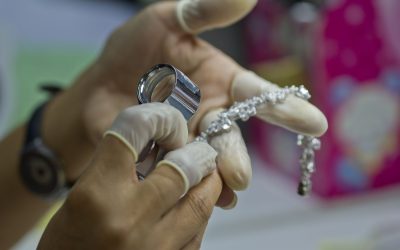Navel piercings or belly button rings as they are more endearingly referred to, have long been the body modification accessory of choice for teenage girls, young adult women (and even a select group of men) in Western cultures. On average, these types of piercings can require as little as four months or, in some cases, as much as an entire year to properly heal. However, with proper care and good personal hygiene practices it is possible greatly reduce the amount of healing time required.
Got Pierced? Now What?
If you’ve recently adorned your midriff with a belly ring, bar or some other form of jewelry, you may be wondering the best way to care for your new piercing. Asides from remembering to regularly clean the area with warm water and a light antiseptic, here are some simple things that you may wish to consider:
- Avoid tight fitting clothing, but remember to keep the piercing covered. Especially for the first few days to prevent dust and other debris from contaminating the healing skin.
- Loose, breathable cotton is best. Not only will it keep the area covered, but it will also ensure that air can still travel through.
- Don’t touch it! As tempting as it may be, wait several weeks before removing or changing your jewelry. Dirt, grime and salt from your fingers will only lead to problems.
Uh-oh, is it supposed to look like that?
If new body jewelry or a belly piercing is not cleaned regularly or properly cared for, serious (and painful) infections, or even permanent scarring, can set in – and fast! Oftentimes, the most noticeable sign of infection is redness or swelling at the piercing site. However, sometimes more gruesome telltales may occur.
If you notice any of the following, your navel piercing may be infected.
- Redness, itching, swelling or irritation
- Discharge, puss, or yellow-green crust
- A high degree of pain or sharp pain when touched
- Rapid change in temperature of local area
- An unusual amount of blood
- A sour or foul odor
Most minor infections can be quickly treated with proper cleaning and, in some cases, antibiotics. However, if any of the above-mentioned symptoms are followed by extreme fatigue, fever, nausea or fainting, you should consult a medical professional immediately as this can be a sign of a serious septic infection.
Like us on Facebook: https://www.facebook.com/bodyjewelrystore
Follow us on Twitter: https://twitter.com/bodyjewelry_com
Follow us on Google Plus: https://plus.google.com/101822070437269038300/posts








